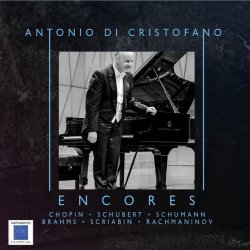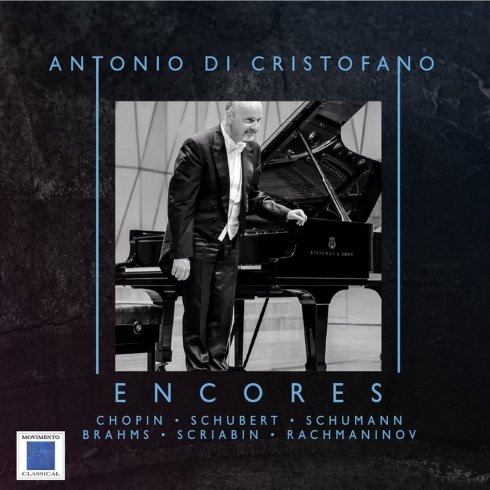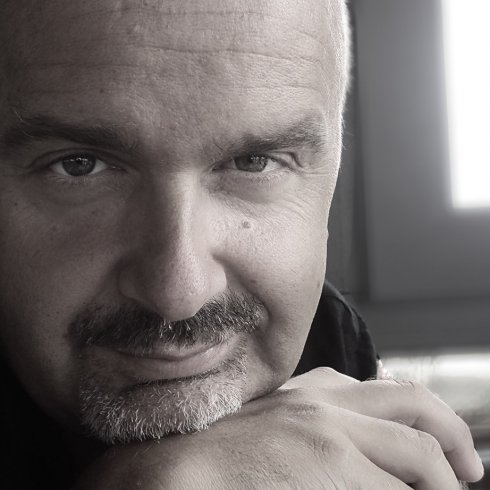

Encores
The four Ballades by Brahms were composed during summer 1854. After the powerful sonatas (op. #1, 2 and 5) the author wants to go back to the Ternary and Song form, showing a definite will to re-propose a classica} outline, purged and uprooted from all that Romanticism had suggested with such vigour and arrogance. Schumannian influences and an evident literary inspiration can be found in these ballades, which are far from the size and from the emotional impact of the homologous compositions by Chopin and by Liszt. A passionate reader, Brahms still very young, would spend in fiction and poetry the few coins he earned when playing dance music inside suburb pubs. Once he became famous he therefore turned into a collector of ancient and valuable texts. This young author was inspired by passionate reading of the Stimmen der Volker by Herder, a renowned collection of protoromantic lyrics which we can find again in some following compositions such as texts by Lieder (Murrays Ermordung op. 14 #3 for voice and piano and Edward op. 75 #1 for two voices and piano). The first Ballarle was inspired by the reading of the German translation of the Scottish poem "Edward" which is centred on a parricide, musically described through the cruel dispute between Edward (the parricide) and his mother. The second Ballarle shows three themes in contrast among eachother, of which the second one - with its crude and violent character - recalls Edward's dramatic action. The third one, in B minor, appears in the form of a scherzo and is characterized by a light and fanciful pianism. The last Ballarle closes the cycle in an intimate (second theme) and contemplative fashion. In spite of the great value of these compositions, of the enthusiastic opinion of a scarcely generous critic 1ike Schumann was and of the interest shown by some great pianists as Arturo Benedetti Michelangeli and Alfred Brendel, Brahms' Ballades are not executed ali that frequently - which makes Antonio Di Cristofano's proposal especially valuable. In his book dedicated to the analysis of the ATTO PRELIMINARE by Alexander Scriabin, Alessio di Benedetto righteously divides up the whole of the author's production into three basic periods: 1) The first one (up to 1903) where the harmony of the latest Chopin strongly influences his production (Busoni will talk of having a surfeit of Chopin). 2) The middle period during which the author relates, in bis symphonic operas, to Wagner's and Liszt's chromatism and sound clangours so as to stop time within an ecstatic vision that will guide, just like some sort of a fixed idea, bis last creative period. This is the period of the fourth and fifth sonatas for piano, of symphony #3 and of Poem of Ecstasy 3) The third period starts with the superb and intensly beloved by the author Sonata #7, which requires a deep understanding of the composer' s opinions, of his philosophy and of his interest in theosophy which had occurred in consequence of his exciting literature such as "La dottrina segreta" and "La chiave della teosofia" by H. P. Blavatsky. He will finally reach his own harmonic system which will be long misunderstood and that the musicologist A. Di Benedetto calls polarnucleus Harmony. He will be using heptaphonic, nonaphonic, hendecaphonic materials, up to the 12-tone chord in the "preliminary act". The second sonata (Sonata - Fantasia) that was composed sluggishly and with plenty of doubts during the years 1895 to 1897 bis divided in two opposing movements and has a definite program: The first section of the first movement symbolizes the quietness of the night on a southern beach. The next one represents the dark unrest of the deep sea. The third evokes, within the modulation of the middle section, the caress of moonlight and ends up- in the second movement (Presto)- with the wide expanse of the ocean during a storm


Antonio Di Cristofano
Antonio Di Cristofano completed bis piano studies in 1986 at the Conservatory "L.Cherubini" in Florence, under the supervision of M0 Bacchelli. He has perlected with M0 Damerini. He played as a soloist with the Chamber Orchestra of Florence, Symphony Orchestra of Lecce, Magna Grecia Orchestra, SicilySymphony Orchestra,SolistiAquilani, MilanoClassica Orchestra,Sinfonica Abruzzese, SanremoOrchestra, FVG Mittleurope Orchestra, Radio Orchestra of Bucarest, Orquesta Sinfonica de l'Estado de Mexico, RadiotelevisionAlbania Orchestra, Presidential Ankara Symphony Orchestra, Praga Radio Symphony Orchestra, North Czech Philarmon ic, Czech Philarmonic Orchestra, Izmir Symphony Orchestra, lasi State Philarmonic, Wiener Mozart Orchestra, Toronto Sinfonia, Philarmonique de Montreal, Jerusalem Symphony, Slovak Filharmonie, Kaerntner Sinfonieorchester, Dubrovnik Symphony Orchestra, Istanbul Symphony Orchestra, Orquestra do Norie, Sinfonica di Sao Paulo, Thuringen Orchestra, Moravian Philharmonic, Euro Sinfonietta Wien and recently with LaScala Milan Orchestra, withconductors like G. Taverna, M. Bosch, M. Alsop , C. Schulz, M. Zanini, C. Olivieri-Mu nroe , L. Svarovsky, A. Chernushenko , M. Sieghart, T. Kuchar and many others. He played, in Italy, for the most important Festival: the "Verdi Theatre" in Florence, t be "Festival dei DueMondi" inSpoleto, "Asolo Musica", the Theatre ofAlessandria, the "BibbienaTheatre" in Mantova , the "Puccini Hall" at the Conservatory "G.Verdi" in Milan, "Politeama Theatre" in Palermo, "Auditorium San Barnaba" in Brescia, Festival Duni in Matera, etc.,in Romania Enescu Festival in Bucarest,E.spana (Festival de Viga,Toledo Festival, Jeunesses Musicales de Sevilla), Mexico (BellesArtes Palacio,Revueltas Auditorium), USA (Moores Opera House of Houston, Gates Concert Hall in Denver, Washington International Piano Festival, ecc), Turkey (Istanbul, Izmir and Adana), Croatia (Dubrovnik - Rector Palace), Czech Republic (Praga - Smetana Hall and Dvorak Hall), Russia (Ciaikovsky Conservatoire), South Korea (Seoul - Leeum Auditorium), France (Nancyphonies Festival), Austria (Konzerthaus - Klagenfurt) , Germany (Gasteig - Munich), Chopin Society Warsaw, Canada (Toronto - Glenn Gould Studio), Grieg Festival in Norway, YamahaConcert Hall in Tokyo, Shanghay and Shenzen pianofestival an Hong Kong City Hall (China), Swiss , Albania , lsrael, England, Portugal, Bulgary, Ukraine, Belgium, Brasi!, Serbia, Argentina, Sweden, South Africa, Estonia, Finland, Egypt, ecc. He recorded cds with Velut Luna and Millenium label and recently a newone titled Encores. In 2006 and 2007 be mades the debut in Carnegie Hall - New York and in Konzerthaus and Golden Hall MusikVerein in Wien where he will perform again in December 2019. He is often invited as a judge in international Piano Competition (Compositores de Espana - Madrid, Varallo, Cantù, Osijek, Gante - Pordenone, Parigi, Viardo - Belmont, Rachmaninov - Moscow, Iturbi - Valencia , Parnassos - Monterrey, Astana Merei International Competition -Astana, Baltic piano Competition -Gdansk , Bajic Memoria} -Navi Sad, Hong Kong International Young Pianist Competition, Nordic Piano Competition - Malmoe, Mozart Piano Competition -Aachen, Louisiana Piano Competition, Cleveland Piano Competition, Seregno - Pozzoli Piano Competition, ecc) and to teach in Ciaikovsky Conservatory in Moscow, Valencia Conservatory, in the SummerAcademy in Dubrovnik, in Shanghay, Xiamen and NingboConservatory in China, in the SMCAcademy in Seoul, In Valletta International Piano Festival, in Sofia Conservatory, in Thessaloniki Conservatory, in The Orpheus Academy in Wien and in many USA Universi cy. He received three times the Paul Harrys Fellows from Rotary Club . He is Guest Professor at the Xiamen Conservatory in China and in the Summer Academy Orpheus in Wien. In 2018, be received the "Grifone d'Oro Prize" from the Grosseto City.
